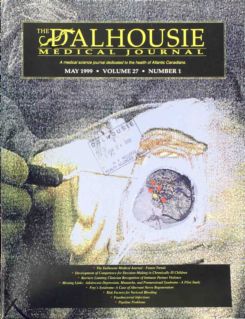Risk factors for Variceal Bleeding
DOI:
https://doi.org/10.15273/dmj.Vol27No1.4336Abstract
Variceal bleeding is the most serious complication of portal hypertension. It is seen in 50-60% of patients with cirrhosis. The mortality in patients wo develop gastroesophageal variceal bleeding is approximately one third. In patients who have never bled from esophageal varices, 30% will hemorrhage within one year after the diagnosis of varices. The risk of bleeding after the initial bleed has been reported in the literature to be between 50 and 80%. In addition, approximately one-half of all rebleeds occur within the first six weeks. Beyond the sixth week after the initial bleeding episode, the risk of further bleeding returns to the same level of risk as in patients who have never bled (i.e., 30% within one year). With these figures in mind, it is important to be aware of the risk factors for gastroesophageal variceal hemorrhage. This paper examines the risk factors that may help identify patients most likely to bleed or rebleed. Specifically, risk factors for: 1) initial bleeding 2) early rebleeding (bleeding within six weeks of the initial bleed) and 3) late rebleeding (greater than six weeks from the initial bleed) are discussed.Downloads
How to Cite
Arnaout, A. (1999). Risk factors for Variceal Bleeding. DALHOUSIE MEDICAL JOURNAL, 27(1). https://doi.org/10.15273/dmj.Vol27No1.4336
Issue
Section
Original Research
License
Authors who publish with this journal agree to the following terms:
- Authors retain copyright and grant the journal right of first publication with the work simultaneously licensed under a Creative Commons Attribution License that allows others to share the work with an acknowledgement of the work's authorship and initial publication in this journal.
- Authors are able to enter into separate, additional contractual arrangements for the non-exclusive distribution of the journal's published version of the work (e.g., post it to an institutional repository or publish it in a book), with an acknowledgement of its initial publication in this journal.
- Authors are permitted and encouraged to post their work online (e.g., in institutional repositories or on their website) prior to and during the submission process, as it can lead to productive exchanges, as well as earlier and greater citation of published work (See The Effect of Open Access).


